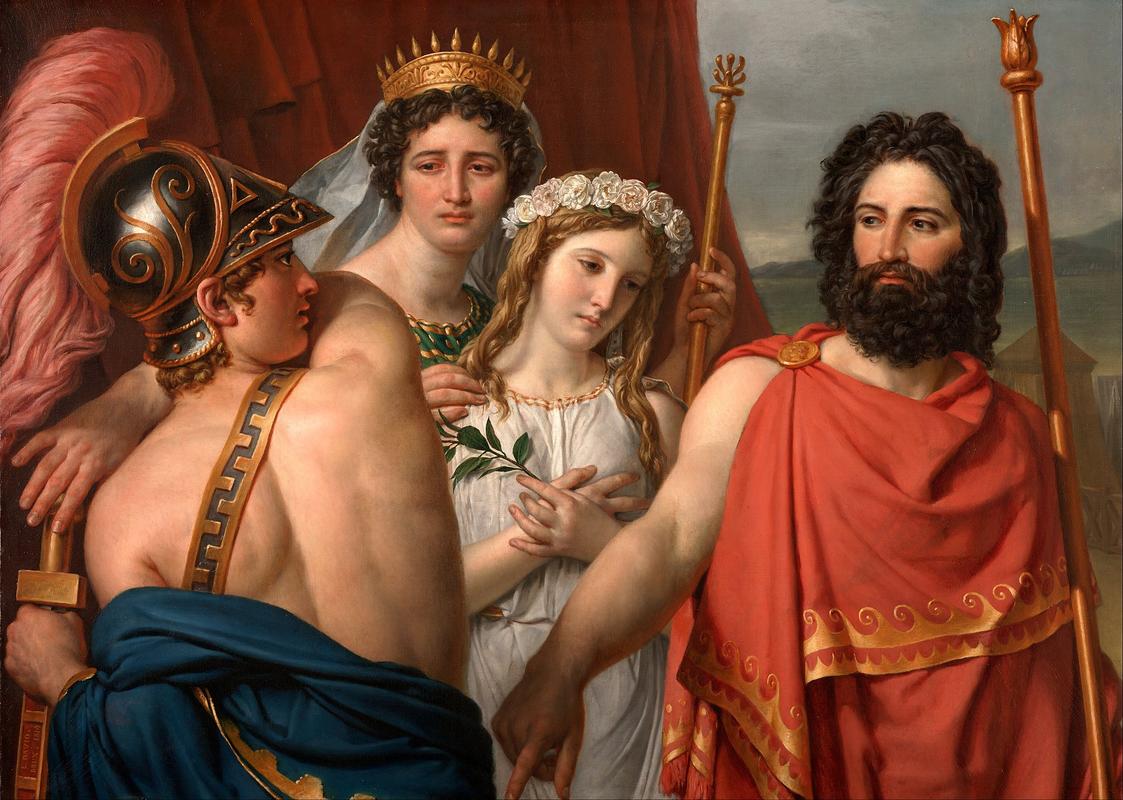Revolution might appear sexy from a distance, but revolutionaries have to see the ugliness and volatility of it, and those are the qualities that appear in Jacques-Louis David's The Anger of Achilles.
Having served the monarchist regime, the revolution, and finally Napoleon, the latest government had given David the boot by the time he produced this work, and he took his exile as an opportunity to do his last paintings. Often focusing on ancient Greek stories, David loved to tell people how happy he was with these late works, which constituted his "farewell to painting." David was not a humble man—he never tired, in this period of life, of telling people how he had changed the face of European painting forever. He was right, but critics and the public wanted to "discover" a humble artist, not maintain the reputation of a boastful one.
In this work, David uses his formidable imagination to invent an unlikely episode from the ancient Greek tale of Achilles. Betrothed to Iphigenia, Achilles is all ready for the excitement of the wedding night—he's got his slow jams cued up on his iPod and everything—so he's more than a little bit bummed out to learn that his would-be father-in-law, Agamemnon, is going to put the kibosh on the wedding. Maybe it would be okay with Achilles if the cancellation was the choice of his bride-to-be but, in keeping with Agamemnon's religion as it was interpreted by the seer Calchas, the plan is to instead sacrifice Iphigenia to a deity in order to successfully send troops to Troy.
In David's painting, Achilles is so miffed that he is about to pull his sword, but Agamemnon pulls a Jedi mind trick on him and Achilles is unable to strike. This moment was influenced by the German mostly-quack doctor Mesmer, from whom we inherit the term "mesmerize," who was an acquaintance of David. In reality, and in the texts of Euripides and Racine, Achilles is not necessarily upset enough to do anything like this: going against a seer would be heresy.
In some versions of the story they do sacrifice Iphigenia, and in other versions, they don't. In at least one version where she doesn't make it, she is unaware of the ruling of Calchas, thinking that the sacrificial altar is the wedding altar, which is pretty harsh!
















I think this piece tells a very passionate story. It represents Neoclassical art very well in how it illustrates and draws from greek mythology for it's subjects and story line. Your eyes draw to Iphigenia as the subject. She is the reason for all the emotion you draw from the painting. The sadness of her mother, the seriousness of her father, and the anger of Achilles.